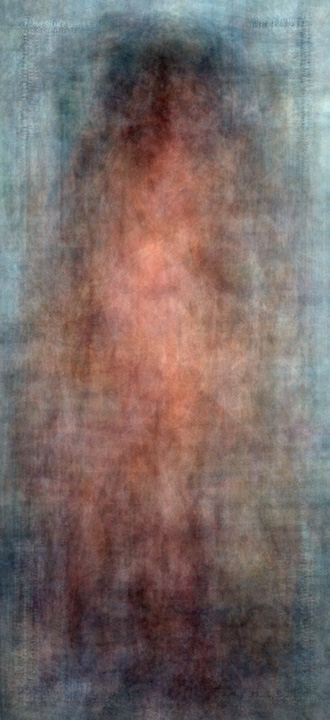When Walter Benjamin wrote The Work of Art in the Age of Mechanical Reproduction in 1936, he didn’t consider the possibility of the work of art as mechanical reproduction. Its aura is in its multiplicity, the quality of its presence not depreciated but secured.
Jason Salavon, Every Playboy Centerfold, 1960s, 2002 (Image via)
 Benjamin’s essay – one of the most beautiful in the history of art writing – remains essential for its ideas, cloaked as they are in the political realities of his time and place: Fascism as an immediate threat, Communism as a Utopian possibility.
Benjamin’s essay – one of the most beautiful in the history of art writing – remains essential for its ideas, cloaked as they are in the political realities of his time and place: Fascism as an immediate threat, Communism as a Utopian possibility.
Michael Darling’s Target Practice: Painting Under Attack, 1949-1978 opens 13 years after Benjamin’s study and is informed by its premises.
Painting simply is in no position to present an object for simultaneous collective experience, as it was possible for architecture at all times, for the epic poem in the past, and for the movie today. Although this circumstance in itself should not lead one to conclusions about the social role of painting, it does constitute a serious threat as soon as painting, under special conditions and, as it were, against its nature, is confronted directly by the masses.
Confronted directly by the masses….
The purpose of museums is to be safe havens for art and to present that art to the public. The real threat to the aura of an artwork in a museum setting, however, is the public itself.
That’s why the most esteemed work is no longer visible there. To see the Mona Lisa amid the whir of cameras in a murmuring crowd is to not see it at all. The rich and influential can arrange private tours of the Sistine Chapel. I know someone who stood alone in that room, not even a guard to keep him company. He lay down on the floor and stared. Every time I’ve been there, the floor was a cattle pen and the cattle restless, eager for an experience they weren’t sure they were having.
I’m all for visitors being able to take photos of art in museums, and also for them to draw, paint and sculpt their reactions to their encounters, even (shudder) organize their own tours led by themselves for their (inevitably rowdy) friends. Unless the community feels ownership of museums, they will not thrive. Patronage of the precious few is not enough. But the pleasures of seeing art with few or no others in the vicinity cannot be denied. It is in those solitary moments that real connections occur. Numberless times in museums and galleries I have yearned to tell those around me to shut the fuck up. Art museums must attract the public but also manage the public they attract. None of that is easy.
I’m writing this in response to an earlier post, If it isn’t spreadable, it’s dead, because that post made it sound easy. I can only add I’m glad I’m not in charge.



We’re all glad you’re not in charge, Regina
I completely agree with your vision of what a museum should look like, particularly the part about visitors being allowed to sketch, paint, and take photographs. I would guess that the “copy rights” are prized more by the museums than by the living and dead artists whose work they show, and they are kept at too great a price.
Unfortunately, the copy rights are managed by third parties in many cases, not the museums. These people will HUNT YOU DOWN if the museum doesn’t pay the required fee to display an image of a work of art that the museum owns on its own website or in a brochure. It is a shame that non-profit arts organizations are being held hostage by the ridiculous prices these companies are demanding.
This all sounds snobby to me. Art is about humanity. Its for everyone. If you can’t enjoy it in a noisy, crowded museum whats the point?